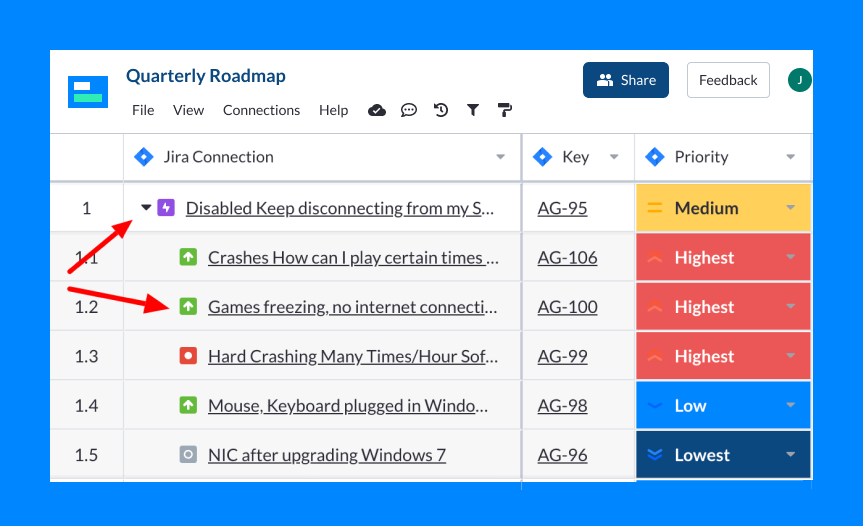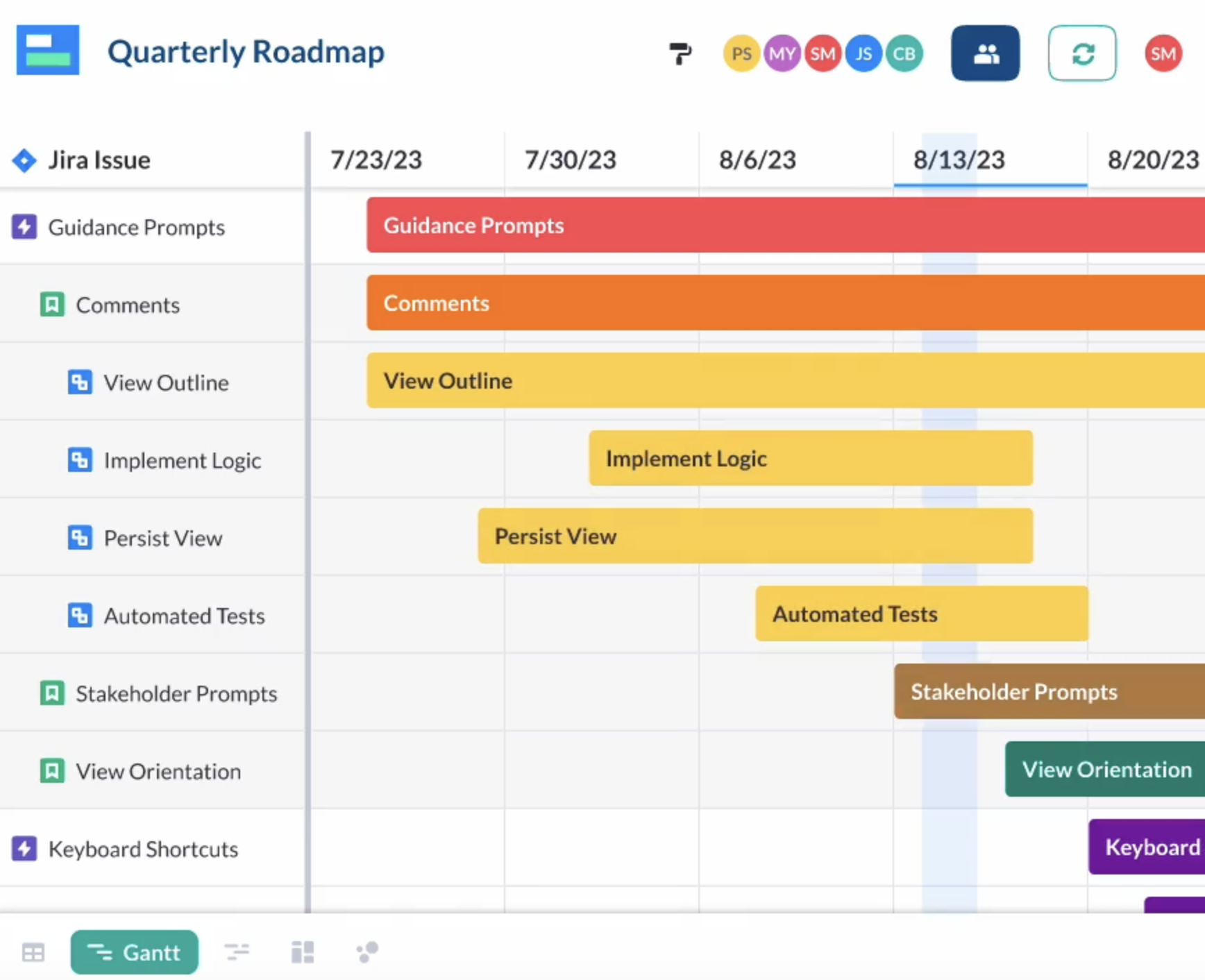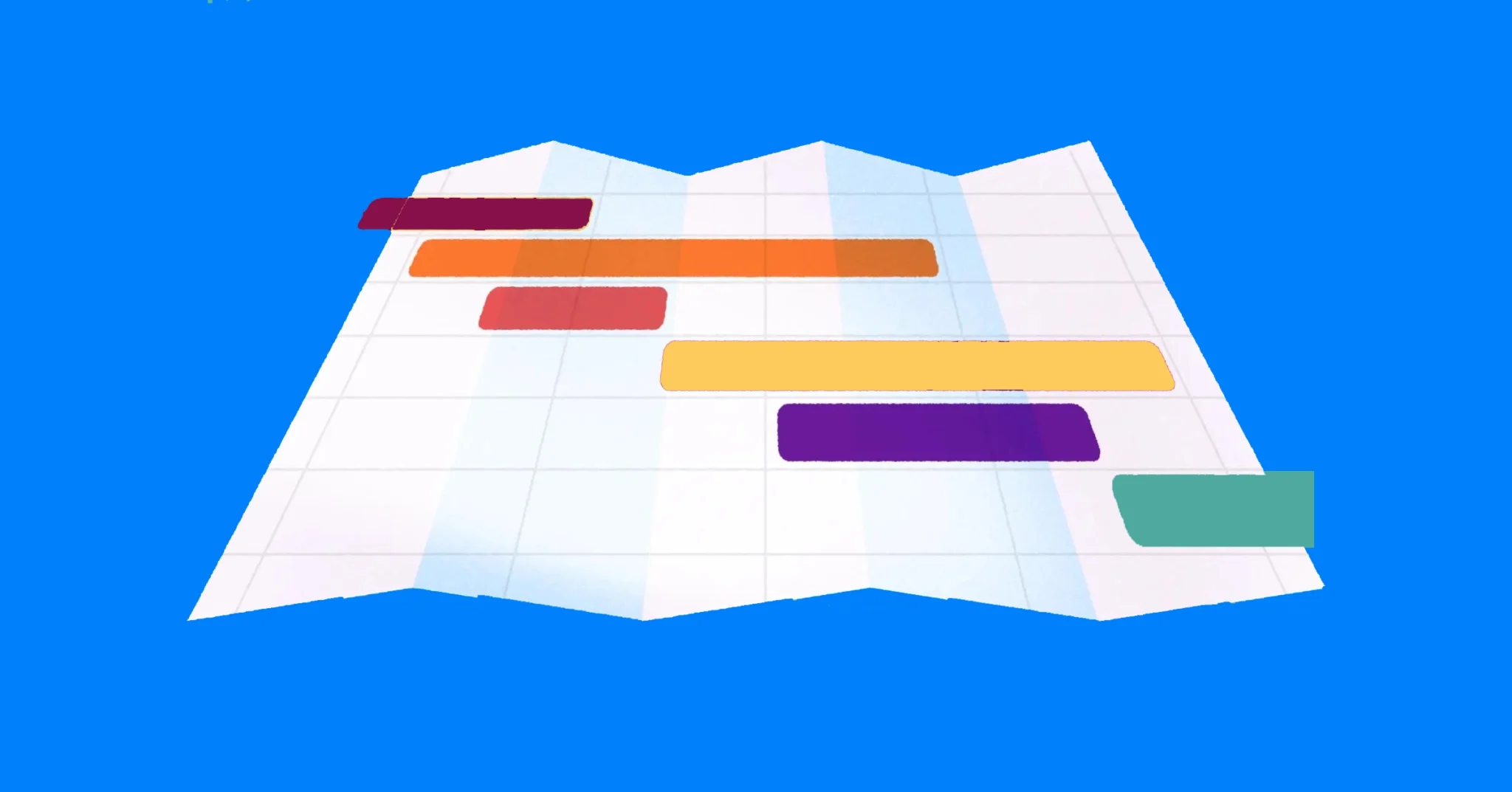
4 Ways Project Managers Build Stakeholder Trust with Visor
Building trust with stakeholders is a necessary skill for project managers who want to advance their careers, gain recognition, and make their lives feel (somewhat) sane.
However, stakeholder trust is multifaceted; it involves more than delivering successful and completed projects.
Three elements of stakeholder trust that PMs must regularly address:
- Gain and reaffirm alignment regarding strategic prioritization
- Demonstrate that you are successfully managing projects
- Consistently deliver projects on time and within scope
Even when project managers establish this trust, it’s not uncommon for stakeholders to crave consistent updates, fresh data, and strategy documentation. This unavoidable need to communicate with stakeholders often decreases PMs’ time to work on project management duties.
Luckily, project managers using Visor have discovered they can win back hours every week while making stakeholders happy. Here are four ways they do so.
#1: Offer Stakeholders Transparency
Project managers often use SaaS apps like Jira to manage projects with engineers, QA teams, and other individual contributors. However, not all stakeholders will venture into project management apps to get updates or stay in the loop.
Executives are especially notorious for wanting all the pertinent details of a project despite not having the time to dive into the weeds, or a real desire to access or learn how to use complex project management apps.
For example, Jira doesn’t give you an easy way to share with people unless they have a Jira license for your Jira instance. There’s no such thing as Jira guest access and even if there was, Jira – with all it’s complexity – would not be an ideal way to share updates with stakeholders anyway.
Project managers using Visor mitigate this problem entirely by sharing colorful Gantt charts and spreadsheets that sync with project data from apps like Jira.

Visor’s two-way Jira integration is simple but powerful. Nested hierarchies are honored, allowing project managers to visualize their data in a way that is easy for stakeholders to understand instantly. You can also filter out granular data for specific audiences and combine multiple projects in one Jira roadmap using JQL.
This enables you to create portfolio roadmaps or Gantt charts and other portfolio view types.
You can also create program roadmaps and a wide range of other visualizations in Visor using your Jira data without having to use Advanced Roadmaps (also known as Jira Plans) or an expensive Jira portfolio plugin.
Even if you do not use Jira, you can still create reports by copying and pasting data from Excel or manually inputting custom fields into Visor.
#2: Share Colorful & Accurate Gantt Charts
CEOs love Gantt charts. They’re colorful, easy to read, and give them the big picture.
Here’s why one Visor user loves sharing Gantt charts with execs:
To put the life of a company into a Gantt chart allows the CEO to see what we’re doing and how we’re doing.”
— Visor user / Operations Manager working in the manufacturing industry
Because stakeholders need legible, easy-to-understand reports, Visor lets you color-code your Gantts so that it’s easy for anyone to understand.
Implementing color theory and color psychology before sharing your charts can help you have a leg up when communicating the statuses of tasks and make your project plans as legible as possible.
Sharing Gantts you make in Visor also means you’re sharing accurate project data. With Visor, you simply have to press “Sync” to update your workbook with your most fresh Jira data. Then, rest easy knowing that your Gantt chart reflects reality.
Don’t use Jira? You can still save yourself a lot of time by using Visor’s spreadsheet. Copy and paste from external data sources (e.g., Excel) and filter what data each audience needs to see. Add some conditional formatting, and you will have a single source of truth that you can easily adjust for different teams.
#3: Avoid Sharing Stale Data
I won’t mince words when I say this: a CSV file download is where fresh data goes to die.
While it might seem convenient to export Jira data into a CSV file so that stakeholders can review project plans in Excel or Google Sheets, doing so means that you will eventually contend with different audiences having different sources of truth.
For example, your CFO may open up a CSV from 3 days ago, thinking that a milestone is about to be hit by the end of the week. However, in the last 48 hours, your QA team has discovered a bug that keeps the release in code review. There will be a disconnect and misalignment in expectations, causing confusion and potentially losing trust.
Instead, share a spreadsheet or chart that stays in sync with apps like Jira using Visor. This way, you’ll avoid sharing data that will quickly grow stale. Add conditional formatting and colors to make it even more legible. The result? Stakeholders will trust the project data you deliver.
Visor offers both two-way syncing and one-way syncing to popular SaaS apps. One-way syncing lets you share data views, while two-way syncing lets you both view and update project data. No matter what syncing you choose, you’ll be able to share the views you create with stakeholders.
#4. Create Custom Views for Executive Briefs
Many executives demand a weekly update from direct reports and team leaders spearheading important projects.
These weekly email updates can take forever to write, forcing project managers away from the work that will actually move projects forward and make a real business impact.
Build trust with your stakeholders and spend less time putting a weekly report together with Visor by giving them access to your single source of truth, Jira. (Without actually giving them access to Jira.)
Because Visor allows you to filter what data gets displayed, you can also zoom out and provide a big picture for executives. Plus, you can add custom fields in Visor to provide more context and clarity. Then, write 3 to 4 bullets in your weekly email before linking to the custom view you created.
Conclusion: Making Data Accessible Makes Stakeholders Happy
The onus is on project managers to make stakeholders feel dialed in, even if your stakeholders are Luddites who refuse to learn new tools or software.
The beauty of Visor is that you can visualize your single source of truth (e.g., project management apps like Jira) in any number of ways. Create and share custom views for different audiences, ensuring accurate project data.







